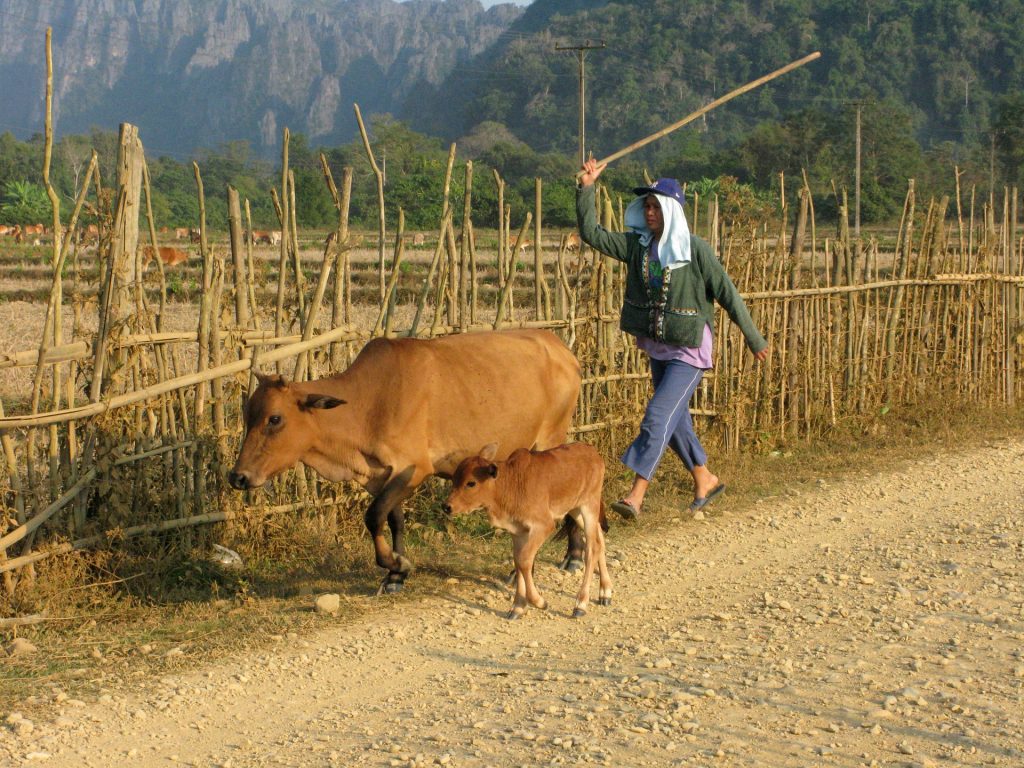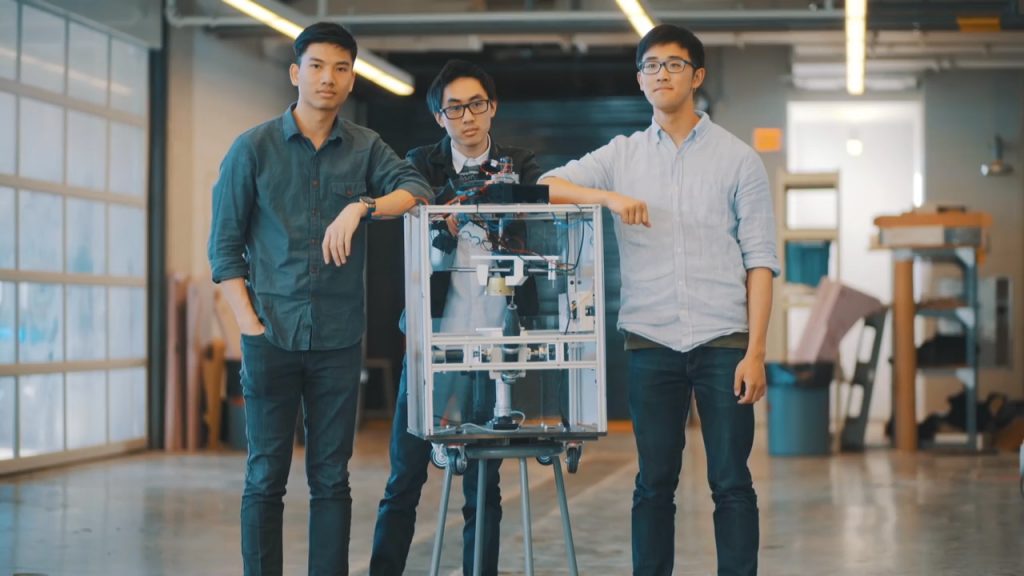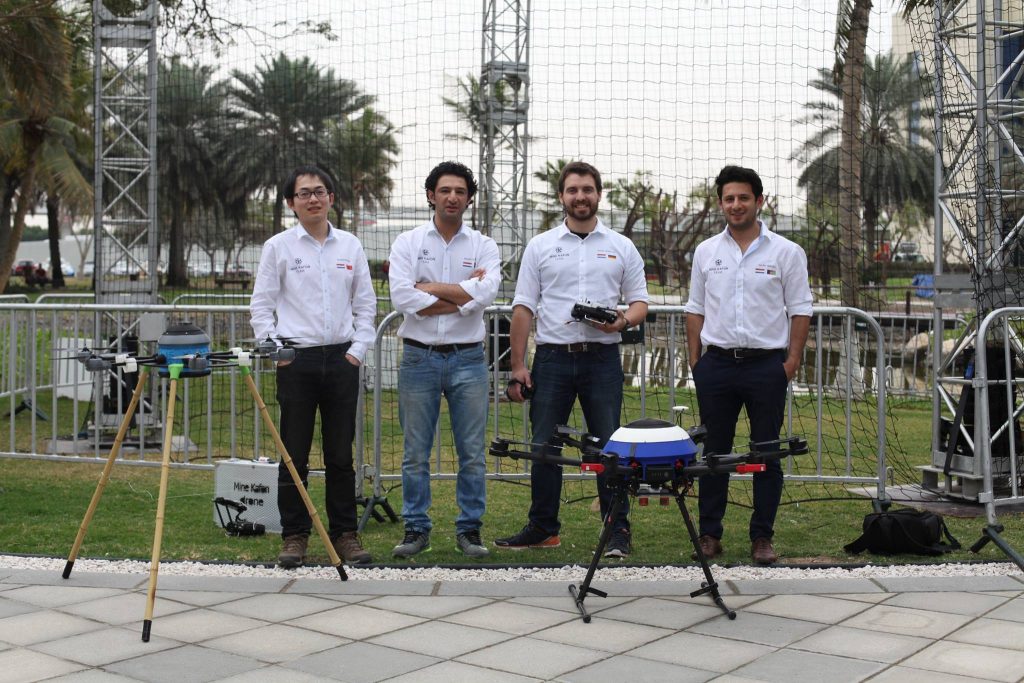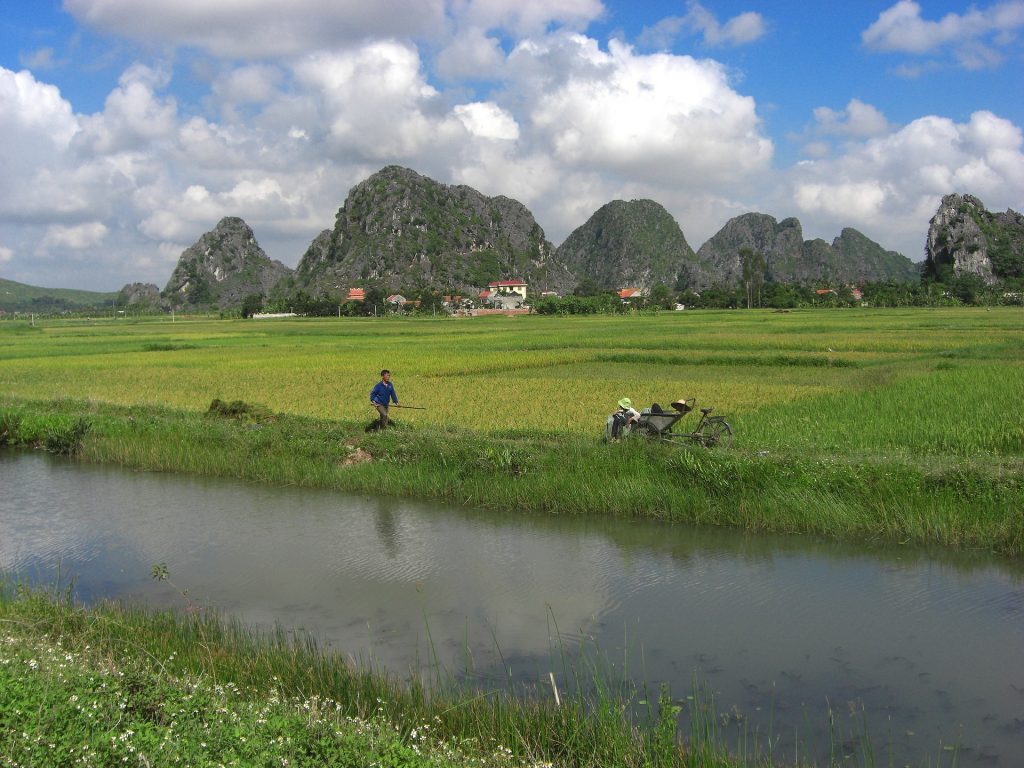By Roshni Kapur
Social enterprises are gradually changing the world with game-changing innovations that address global problems. But when it comes to the safe removal of unexploded ordnance—also known as landmines—will technology be the lasting solution?
Landmines: 5 Quick Facts[1]
- Landmines were first deployed in the American Civil War in the 19th century. They were then used on a bigger scale during the Second World War.
- In 2015, more than 6,460 people were maimed or killed in a landmine-related accident.
- 35 countries have yet to ratify the Mine Ban Treaty and 60 countries are filled with landmines.
- Countries such as India, Pakistan, Myanmar and South Korea continue to lay landmines.
- Myanmar has the third-highest number of landmine victims in the world, after Colombia and Afghanistan. The military still uses landmines in its internal armed conflict with insurgent groups.
Mind-ful States
The International Campaign to Ban Landmines (ICBL),[2] an international body of NGOs, estimates that around 60 countries are contaminated with landmines and unexploded ordnance.[3] Despite the global movement by ICBL to ban landmines, countries such as India, Pakistan, Myanmar, and South Korea continue to deploy antipersonnel landmines. This is a concerning issue, since each new landmine can result in another loss of life or limb.

Many landmine-riven countries, such as Myanmar and Cambodia, are located within Southeast Asia, and the civilians of these nations are particularly vulnerable to these lethal explosives. For example, a Burmese man named Edisson lost his leg (and almost his life) in 2014 when he stepped on a landmine in Myanmar’s Kayin State.[5] He managed to get his leg amputated in time at a clinic based at a military centre, but upon recovery, he found it difficult to move around in crutches. He returned to the same clinic, which provided him with a prosthetic leg and physiotherapy sessions. Today, Edisson’s artificial leg enables him to go about his day-to-day activities including riding a motorcycle and swimming.
However, not all civilians have been as fortunate as Edisson. Each year, hundreds of people in the region continue to be maimed or die from injuries caused by landmines and cluster munitions.[4] According to the Landmine and Cluster Munition Monitor (LCMM),[6] Myanmar has the third largest number of landmine victims globally, after Colombia and Afghanistan. Mine warfare is a key characteristic of the country’s home-grown conflict where both the military and non-state armed groups have used landmines.
In Vietnam, over 20 per cent of the land is tainted with mines that have maimed or killed over 100,000 civilians since the end of the Vietnam War.[7] Moreover, landmines are easy to make and deploy, but are highly costly and dangerous to remove.
In 2011, Thailand admitted to using cluster bombs—a type of explosive weapon which scatters submunitions (“bomblets”) over an area—when it was locked in a four-day border dispute with Cambodia.[8] To date, both nations have yet to ratify the Convention on Cluster Munitions (CCM),[9] an international treaty that prohibits the use, transfer and stockpiling of cluster bombs.
According to the Cluster Munition Coalition (CMC),[10] the unexploded ordnance places thousands of villagers at risk of being maimed or killed, especially curious children, who are attracted to the appearance of these striking and bright-coloured bomblets. Cambodia in particular has been badly hit with landmines, thanks to a civil war spanning three decades. Landmines and unexploded ordnance are daily hazards that cause great suffering and inconvenience to the local communities, and people residing near mine-contaminated areas live in constant fear of injury and death. Many Cambodian families are also afraid to use land for farming because landmines are victim-oriented, exploding on civilian and soldier alike. This well-founded fear of possible landmines therefore stands between the nation’s agricultural and economic development.
Regional Expert Panel
In 2013, Vietnam urged ASEAN members to address the prevailing issue in the region by forming an expert panel to resolve the severe threats and consequences of landmines, unexploded bombs and other explosives,[11] and ultimately achieve peace, development and stability for the region. Vietnam’s Deputy Defense Minister Lt. Gen. Nguyen Chi Vinh proposed the idea during a meeting with regional defence officials in Brunei. He said that such a panel would be helpful for all countries facing repercussions from landmines and unexploded ordnance.

To date, however, Myanmar, Laos and Vietnam have yet to ratify the Mine Ban Treaty.[12] Although Vietnam has echoed support for the treaty’s humanitarian goals, it has voiced concern over some of the treaty’s provisions.[13] Similarly, while the Laotian government has expressed interest in ratifying the Ottawa Convention, it has stated that it needs time to meet the agreement’s duties.[14] In Myanmar’s case, landmines are associated with the military and national security, and its government continues to deploys landmines during conflicts with rebel armies.
Groundbreaking Solutions
Meanwhile, as governments and regional blocs explore long-term solutions, social enterprises are doing their part to innovate in the areas of landmine clearance and risk education. One such start-up is Demine Robotics (previously known as The Landmine Boys), [15] which has made Cambodia its testing ground to assess a new prototype. What began as a final-year project for five engineering students from the University of Waterloo in Ontario, Canada, has now catapulted into a full-fledged organisation that specialises in the safe removal of landmines from mine-affected places.
 Photo from Demine Robotics' Facebook Page
Photo from Demine Robotics' Facebook Page
Richard Yim, one of Demine Robotic’s co-founders, has a personal affinity with Cambodia. His aunt was killed in a landmine-related accident, and he knew from an early age that this was an issue he wanted to resolve. He travelled to Cambodia in 2015 to test out his first prototype on landmines without explosives.[16] There, his team worked on making improvements to a machine that could remove a landmine from the ground before cutting it open. Richard then returned to Cambodia to experiment with the device’s capability to handle landmines filled with explosives. Yim’s team is currently working on a final version of this technology—slated for a 2018 market release—a robot that can independently navigate its way through dangerous places (without a human chaperone), remove landmines, as well as safely detonate them. This project has been very well received so far—it won a US$25,000 prize in the University of Waterloo’s Velocity triannual startup competition,[17] and Yim has appeared as TedxUW speaker.[18]
Another cutting-edge initiative is the Mine Kafon Drone (MKD),[19] previously known as Mine Kafon. The product is a drone that can independently map, detect and detonate landmines. The group is led by Massoud Hassani. Raised in northern Kabul in Afghanistan, a country ridden with landmines, Hassani witnessed the dangers of landmines first-hand. He first designed the Mine Kafon, a wind-powered landmine detector, for his graduation project in 2011. Encouraged by plenty of media interest, he and his brother Mahmud created a Kickstarter campaign to raise funds to develop the MKD.[20]
 Photo from Mine Kafon Lab's Facebook page
Photo from Mine Kafon Lab's Facebook page
The product has since undergone wide-ranging field-testing and prototyping, and has been developed into a distinct piece of landmine-clearing technology. The team behind MKD claims that the drone is both faster and cheaper than existing demining technologies, and believes that it has the potential to defuse the entire world’s landmines within a single decade.
To date, over 150 countries have signed the Ottawa Convention thanks to ICBL’s effort in urging more countries to become signatories. Regional blocs such as ASEAN are also moving towards forming an expert panel. This has decreased the number of casualties, cleared landmines and provided assistance to victims. In December 2005, the UN General Assembly (UNGA) declared 4 April of every year to be the International Day for Mine Awareness and Assistance in Mine Action.[21]
Coupled with the game-changing social innovations—including but not limited to Demine Robotics and Mine Kafon Drone—the vision of a mine-free world is beginning to look close at hand.
Notes
[1] ICBL, “A History of Landmines”, at http://www.icbl.org/en-gb/problem/a-history-of-landmines.aspx; ICBL, “Why Landmines Are Still a Problem”, at http://www.icbl.org/en-gb/problem/why-landmines-are-still-a-problem.aspx ; By Su-Ann Oh and Veena Nair, “Landmines in Myanmar: No Solution in Sight”, ISEAS Perspective, 29 September 2016, at https://www.iseas.edu.sg/images/pdf/ISEAS_Perspective_2016_54.pdf
[2] International Campaign to Ban Landmines website (ICBL), at http://www.icbl.org/en-gb/home.aspx
[3] ICBL, “Why Landmines Are Still a Problem”, at http://www.icbl.org/en-gb/problem/why-landmines-are-still-a-problem.aspx
[4] Jeffrey Hays, “Land Mines, Unexploded Bombs and Agent Orange In Cambodia”, FactsandDetails.com, at http://factsanddetails.com/southeast-asia/Cambodia/sub5_2d/entry-2911.html
[5] International Committee of the Red Cross, “Surviving Landmines: Edisson’s Road to Recovery”, ICRC.org, 20 June 2014, at https://www.icrc.org/en/document/surviving-landmines-edissons-road-recovery
[6] Landmine and Cluster Munition Monitor website, at http://www.the-monitor.org/en-gb/home.aspx
[7] Tuoitrenews, “Vietnam Suggests ASEAN Set Up UXO Expert Group”, 4 April 2013, at http://tuoitrenews.vn/politics/8477/vietnam-suggests-asean-set-up-uxo-expert-group
[8] Guy De Launey, “Thailand Admits Cluster Bombs Used against Cambodia’”, BBC, 6 April 2011, at http://www.bbc.com/news/world-asia-pacific-12983127
[9] Convention on Cluster Munitions (CCM) website, at http://www.clusterconvention.org
[10] Cluster Munition Coalition (CMC) website, at http://www.stopclustermunitions.org/en-gb/home.aspx
[11] Tuoitrenews, “Vietnam Suggests ASEAN Set Up UXO Expert Group”.
[12] The Mine Ban Treaty is commonly known as the Ottawa Convention, an international accord that legally binds its signatories against deploying landmines, provides assistance to landmine victims and finds ways to clear landmines. United Nations, “Convention on the Prohibition of the Use, Stockpiling, Production and Transfer of Anti-Personnel Mines and on their Destruction”, 18 September 1997, at http://www.un.org/Depts/mine/UNDocs/ban_trty.htm
[13] http://www.the-monitor.org/en-gb/reports/2016/vietnam/mine-ban-policy.aspx
[14] Landmine and Cluster Munition Monitor, “Lao PDR: Mine Ban Policy”, at http://www.the-monitor.org/en-gb/reports/2017/lao-pdr/mine-ban-policy.aspx
[15] Demine Robotics website, at https://deminerobotics.com
[16] Aleksandra Sagan, “The Landmine Boys Venture from Waterloo to Cambodia to Defuse Deadly Bombs”, CTV News, 6 May 2016, at http://www.ctvnews.ca/sci-tech/the-landmine-boys-venture-from-waterloo-to-cambodia-to-defuse-deadly-bombs-1.2891484
[17] Terry Pender, “UW Startup’s Landmine-Defeating Robot Earns Velocity Cash”, TheRecord.com, 1 April 2016, at https://www.therecord.com/news-story/6425463-uw-startup-s-landmine-defeating-robot-earns-velocity-cash
[18] Tedx Talks, “3 Easy Steps to Change the World: Richard Yim at TEDxUW”, YouTube, 7 March 2017, at https://www.youtube.com/watch?v=XvzvqyGc6P0
[19] Mine Kafon Drone website, at http://minekafon.org
[20] Mine Kafon Drone Kickstarter page, at https://www.kickstarter.com/projects/massoudhassani/mine-kafon-drone
[21] United Nations, “International Mine Awareness Day: 4 April”, at http://www.un.org/en/events/mineawarenessday/index.shtml
 |
Roshni Kapur graduated from the University of Sydney with a Master of Arts degree in Peace and Conflict Studies. She has interned at the Institute of South Asian Studies (ISAS) at the National University of Singapore (NUS). Her research specialisations are in the areas of women’s rights, civil society, and migration, conflict transformation and reconciliation. She has also written extensively for publications such as The Diplomat, openDemocracy, Quartz, Bangkok Post and Rappler. She can be reached at kapur.roshni@gmail.com |









Comments